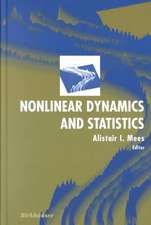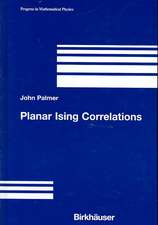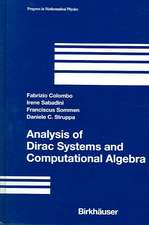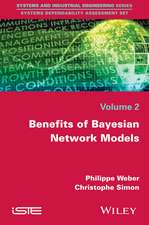Mathematical Modeling in Ecology: A Workbook for Students: Mathematical Modeling, cartea 3
Autor C. Jeffriesen Limba Engleză Paperback – 1989
Preț: 642.18 lei
Preț vechi: 755.51 lei
-15% Nou
Puncte Express: 963
Preț estimativ în valută:
122.88€ • 128.98$ • 101.99£
122.88€ • 128.98$ • 101.99£
Carte tipărită la comandă
Livrare economică 10-24 aprilie
Preluare comenzi: 021 569.72.76
Specificații
ISBN-13: 9780817634216
ISBN-10: 0817634215
Pagini: 194
Ilustrații: X, 194 p.
Dimensiuni: 155 x 235 x 13 mm
Greutate: 0.47 kg
Ediția:1989
Editura: Birkhäuser Boston
Colecția Birkhäuser
Seria Mathematical Modeling
Locul publicării:Boston, MA, United States
ISBN-10: 0817634215
Pagini: 194
Ilustrații: X, 194 p.
Dimensiuni: 155 x 235 x 13 mm
Greutate: 0.47 kg
Ediția:1989
Editura: Birkhäuser Boston
Colecția Birkhäuser
Seria Mathematical Modeling
Locul publicării:Boston, MA, United States
Public țintă
ResearchCuprins
One-An Introduction to Dynamical Systems as Models.- 1.1 Ecosystem Development in Terms of Ecology.- 1.2 State Space, or How to Add Apples and Oranges.- 1.3 Dynamical Systems as Treasure Hunts.- Two-Simple Difference Equation Models.- 2.1 Predator-Prey Difference Equation Dynamical Systems.- 2.2 Probabilistic Limit Cycles.- Three-Formalizing the Notion of Stability.- 3.1 The Concept of Ecosystem Stability.- 3.2 The Relation of Difference and Differential Equations.- 3.3 Limit Cycles.- 3.4 Lyapunov Theory.- 3.5 The Trapping of Trajectories.- Four-Introduction to Ecosystem Models.- 4.1 Brewing Beer and Yeast Population Dynamics.- 4.2 Attractor Trajectories.- 4.3 Derivatives of System Functions.- 4.4 The Linearization Theorem.- 4.5 The Hurwitz Stability Test.- Five-Introduction to Ecosystem Models.- 5.1 The Community Matrix.- 5.2 Predator-Prey Equations and Generalizations Thereof.- 5.3 Signed Digraphs.- 5.4 Qualitative Stability of Linear Systems.- Six-Qualitative Stability of Ecosystem Models.- 6.1 Qualitative Results in Modeling.- 6.2 Holistic Ecosystem Models.- 6.3 Holistic Ecosystem Models with Attractor Trajectories.- Seven-The Behavior of Models with Attractor Regions.- 7.1 Attractor Regions.- 7.2 The Lorenz Model.- 7.3 Elementary Ecosystem Models with Chaotic Dynamics.- Eight-Holistic Ecosystem Models with Attractor Regions.- 8.1 An Attractor Region Theorem.- 8.2 An Example.- Nine-Sequencing Energy Flow Models to Account for Shortgrass Prairie Energy Dynamics.- 9.1 Energy Flow and Accumulation Modeling.- 9.2 Accumulation Modeling.- 9.3 Estimating Energy Flows.- 9.4 Equations and Trajectories.- 9.5 Stability.


























